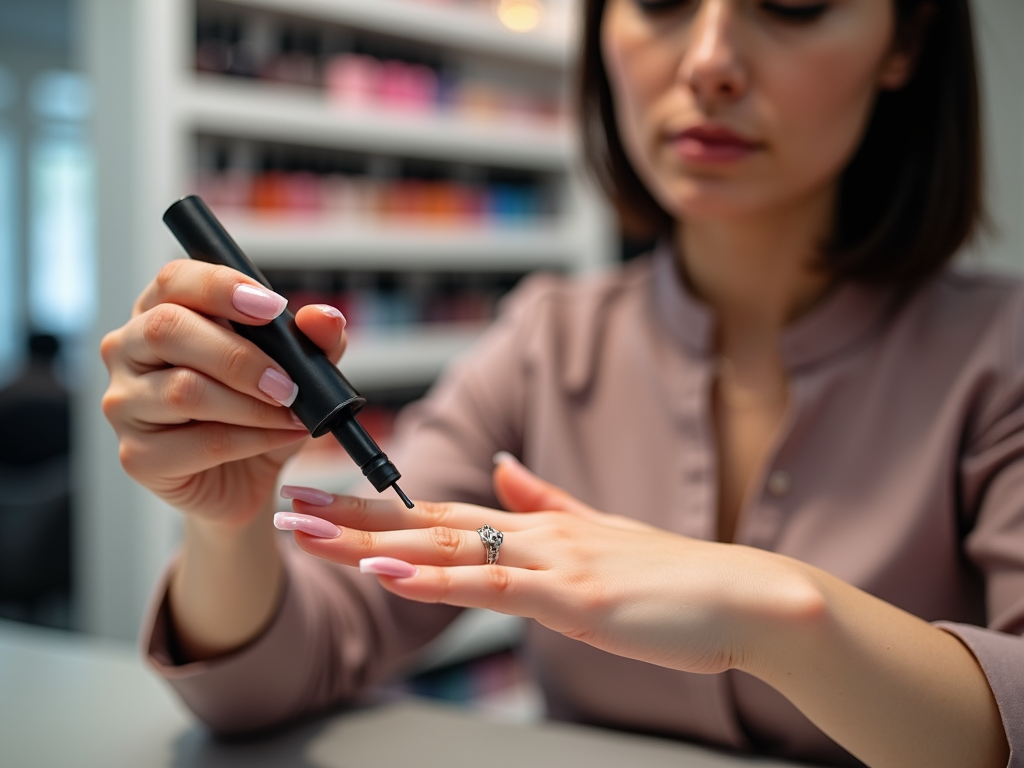Everyone’s been there—smudging your freshly applied nail polish can feel like a disaster. But before you start to panic, experts have shared some effective solutions to save your manicure. Whether you’re at home or on-the-go, these tips will help you fix those pesky smudges effortlessly. Let’s dive into these expert-recommended methods to ensure your nails look flawless.
Why Does Nail Polish Smudge?

Nail polish smudging occurs when the top layer is disrupted before it’s entirely set. This can happen if the polish is applied too thickly or you touch your nails before they are completely dry. Additionally, environmental factors like humidity and temperature can also contribute to the drying process. Understanding why smudges happen can be the first step in preventing them. It’s important to apply the polish in thin coats and allow ample drying time in between to minimize the risk of smudging. Furthermore, using a top coat can act as a shield, protecting the polish while it hardens.
If you notice a smudge right after it happens, quick action can often fix it. For minor dents or smudges, simply wet your finger with saliva or dip it in nail polish remover, and gently smooth the area. This method evens out the polish and fixes smudges seamlessly. In cases where the smudge is more pronounced, apply a small dab of the nail polish to the affected area, blending the edges back into the main coat. This technique helps to disguise the smudge and allows for a more uniform appearance.
Remember not to overdo it with the polish, as multiple layers can end up creating more issues than they solve. For those who have a nail polish setting spray or drying drops, use them after the fix to speed up drying time and make the repair last longer.
Preventive Measures to Avoid Smudges
Preventing nail polish smudges is all about preparation and patience. Here are some tried-and-tested ways to keep your manicure pristine:
- Always start with clean, dry nails, making sure to remove any oils or old polish.
- Apply a base coat to ensure smooth polish application and prolong wear.
- Keep nails protected while you paint by setting up a nail polish station that limits distractions.
- Use thin coats of nail polish, allowing sufficient drying time between each layer.
- Finish your manicure with a quick-dry top coat to reduce drying time and add shine.
By committing to these steps, you’re addressing the root causes of smudges and taking out insurance against future mishaps. A little extra patience during application can save you a lot of hassle later on.
When Should You Consider a Complete Re-Do?
Despite your best efforts, some smudges might be too severe or extensive to rectify with a quick fix. When extensive parts of the nail are messed up, or the polish looks uneven, it might be time to strip it off and start anew. Use a gentle nail polish remover to take everything off without damaging your nails. Give your nails a brief break by moisturizing them before beginning a new manicure.
Starting over ensures better results, and gives you another chance to apply the polish more evenly and carefully. While it might take a few more minutes, a complete redo often results in a more polished and professional-looking manicure.
The Role of Tools in Achieving Perfect Nails
The right tools can make a world of difference in achieving a perfect manicure. Investing in high-quality nail polish brushes ensures a smooth application and fewer streaks. A good nail buffer can make sure that your nails provide an even surface for polish, which prevents smudging.
Additionally, tools like orange sticks can come in handy for quickly fixing minor smudges without ruining your polish job. Always have a small cleanup brush or cotton swab nearby for handling polish that happens to get onto the skin surrounding your nails. Investing in these tools is an investment in your manicure’s longevity, serving as both preventive measures and emergency fixes.
Conclusion
Smudged nail polish doesn’t mean the end of a great manicure. Armed with knowledge from experts and equipped with the right tools, anyone can handle these hiccups with ease. By understanding the causes and being prepared with immediate fixes and preventive strategies, you can keep your polish looking fresh and flawless. Allow yourself the luxury of a little patience and careful application to minimize mishaps in the future.
Frequently Asked Questions
1. How long should I wait between coats to prevent smudges?
Generally, you should wait around two to three minutes between each coat of nail polish. However, if you’re applying thick layers, consider extending this time to ensure the polish has a chance to dry adequately.
2. Do nail polish drying sprays work?
Yes, nail polish drying sprays can be effective at speeding up the drying process and preventing smudges. They work by providing a thin film that helps the polish set quicker, though they don’t replace the importance of patience and proper application technique.
3. Can I fix a smudge with only clear polish?
In some situations, using a clear top coat can help smooth out small smudges. Apply it over the smudged area, using a light touch to blend imperfections and seal the polish beneath.
4. Should I use a UV lamp for drying regular polish?
While UV lamps are traditionally used for gel manicures, they can also be helpful in drying regular polish more quickly. However, it’s important to check whether your nail products are compatible with UV light to prevent any damage.
5. Is nail polish multitasking safe for my nails?
Nail multitasking, which includes using home remedies and gadgets for smudges, is generally safe when done sparingly. However, excessive redos and heavy-use of fixing agents can weaken your nails over time, so it’s best to aim for proper initial application whenever possible.
